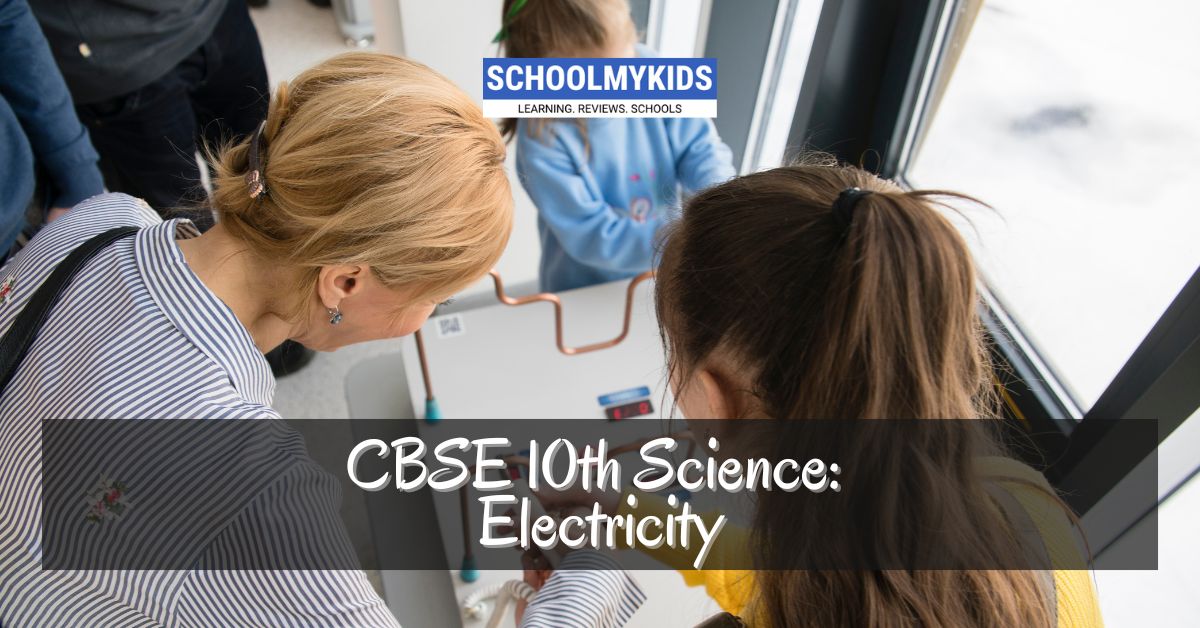Electricity is a fundamental concept in Class 10 Science, covering the principles of electric current, circuits, resistance, and electromagnetism. It explores how electric power is generated, transmitted, and utilized, emphasizing the importance of safe and efficient usage. The chapter provides a comprehensive understanding of electrical quantities, their measurements, and practical applications.
Analysis
Electricity is essential for modern life, driving everything from household appliances to industrial machinery. Understanding its principles helps students grasp how electrical systems work, fostering a foundation for further studies in physics and engineering. The chapter delves into the nature of electric charge, Ohm’s Law, series and parallel circuits, and the role of conductors and insulators. Practical experiments reinforce theoretical knowledge, highlighting real-world applications.
Key Concepts in Electricity
- Electric Charge and Current:
- Electric charge is a fundamental property of matter.
- Electric current is the flow of electric charge, measured in amperes (A).
- Electric Potential and Potential Difference:
- Electric potential is the potential energy per unit charge.
- Potential difference, or voltage, is the work done to move a charge between two points, measured in volts (V).
- Ohm’s Law:
- Ohm’s Law states that the current through a conductor between two points is directly proportional to the voltage across the two points (V = IR), where V is voltage, I is current, and R is resistance.
- Resistance:
- Resistance is the opposition to the flow of current, measured in ohms (Ω).
- Factors affecting resistance include the material, length, cross-sectional area, and temperature of the conductor.
- Series and Parallel Circuits:
- In series circuits, components are connected end-to-end, sharing the same current.
- In parallel circuits, components are connected across the same voltage, each branch having its own current.
- Electric Power and Energy:
- Electric power is the rate at which electrical energy is consumed or produced, measured in watts (W).
- Electrical energy is the total power consumed over time, measured in kilowatt-hours (kWh).
- Electromagnetism:
- A current-carrying conductor produces a magnetic field.
- Electromagnets are temporary magnets created by electric current.
Practical Applications
- Household Circuits:
- Understanding how home electrical systems are wired for safety and efficiency.
- Electrical Devices:
- Familiarity with common electrical devices and their power ratings.
- Safety Measures:
- Importance of using fuses, circuit breakers, and proper insulation.
20 Questions with Answers
- What is electric charge?
- Electric charge is a fundamental property of matter that causes it to experience a force in an electric field.
- Define electric current.
- Electric current is the flow of electric charge through a conductor, measured in amperes (A).
- What is the unit of electric potential difference?
- The unit of electric potential difference is the volt (V).
- State Ohm’s Law.
- Ohm’s Law states that V = IR, where V is voltage, I is current, and R is resistance.
- What factors affect the resistance of a conductor?
- Material, length, cross-sectional area, and temperature.
- How is power calculated in an electrical circuit?
- Power is calculated as P = VI, where P is power, V is voltage, and I is current.
- What is a series circuit?
- A series circuit is one where components are connected end-to-end, so the current is the same through each component.
- Describe a parallel circuit.
- A parallel circuit has components connected across the same voltage, each branch having its own current.
- What is the unit of electrical resistance?
- The unit of electrical resistance is the ohm (Ω).
- How does a fuse work?
- A fuse contains a wire that melts and breaks the circuit if the current exceeds a safe level.
- What is the role of a circuit breaker?
- A circuit breaker automatically cuts off the electrical supply when an overload or short circuit occurs.
- What are conductors?
- Conductors are materials that allow the flow of electric current, such as copper and aluminum.
- What are insulators?
- Insulators are materials that do not allow the flow of electric current, such as rubber and glass.
- What is electromagnetism?
- Electromagnetism is the interaction between electric currents and magnetic fields.
- How is electrical energy measured?
- Electrical energy is measured in kilowatt-hours (kWh).
- What is an electromagnet?
- An electromagnet is a temporary magnet created by passing electric current through a coil of wire.
- Why is proper insulation important in electrical systems?
- Proper insulation prevents electrical shocks and short circuits.
- How does temperature affect resistance?
- Generally, resistance increases with temperature in conductors.
- What is the significance of a power rating on electrical devices?
- The power rating indicates the maximum power the device can safely handle.
- Why is understanding household wiring important?
- Understanding household wiring ensures safe and efficient use of electrical systems and helps in troubleshooting issues.








Be the first one to comment on this story.